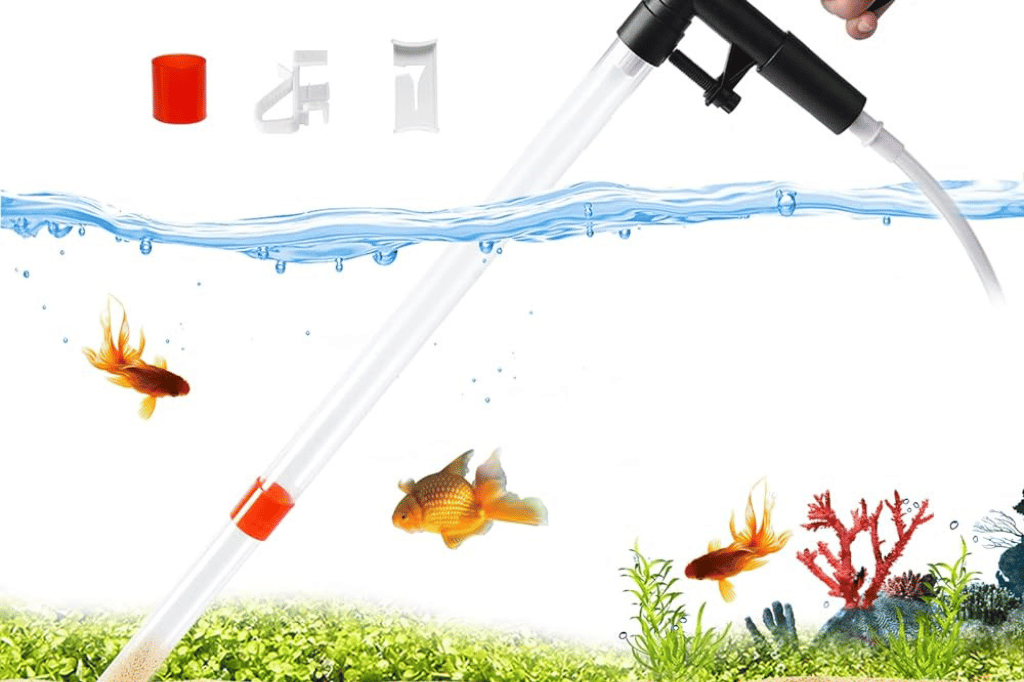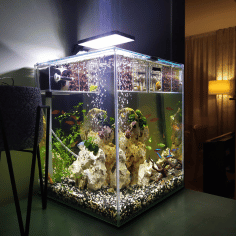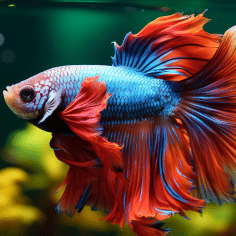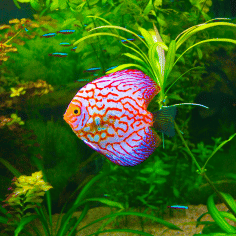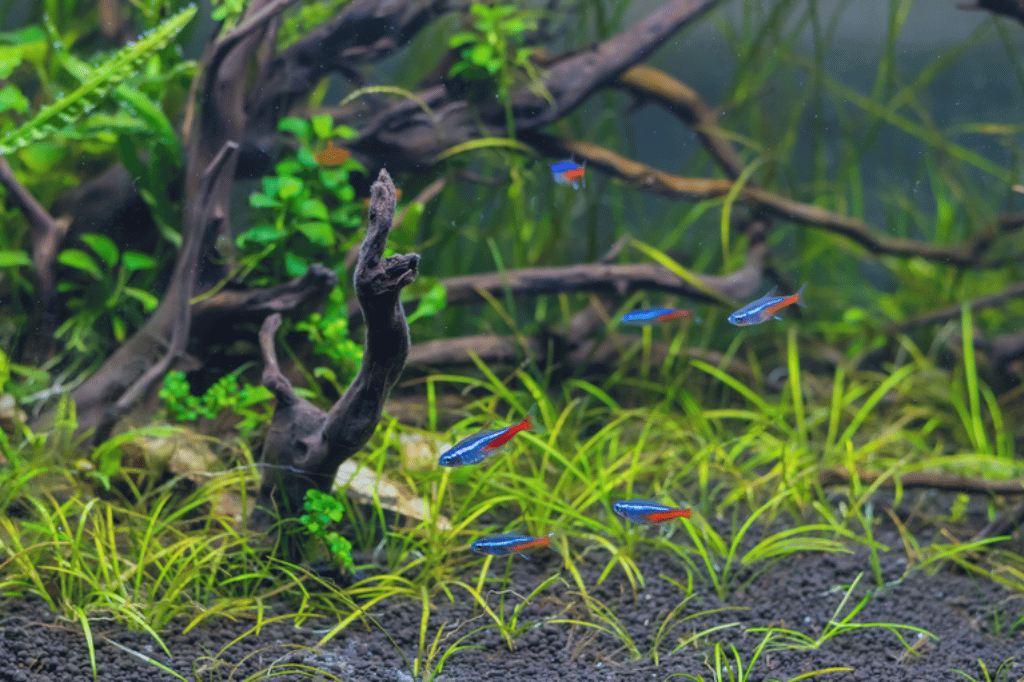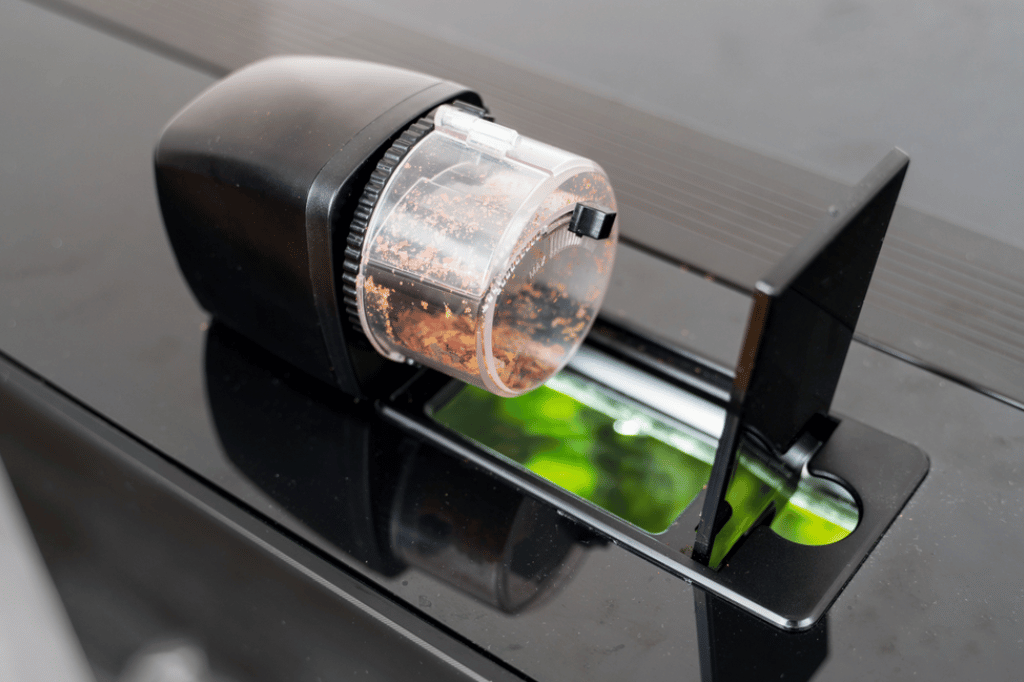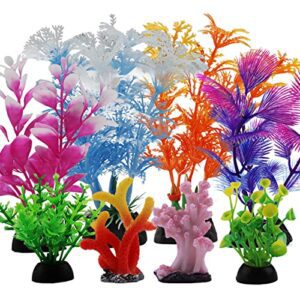Maintaining an aquarium involves not only caring for your aquatic friends but also ensuring their environment stays pristine. A fish tank vacuum cleaner is an indispensable tool for aquarium enthusiasts. It streamlines the often tedious task of removing accumulated waste from the substrate, which is vital for the health of your fish and the clarity of the water.
By siphoning off dirt and debris, these vacuums prevent the buildup of harmful toxins that can affect the tank’s delicate ecosystem. Frequent use of a fish tank vacuum during regular water changes significantly reduces algae growth and maintains optimal water quality, leading to a thriving aquatic habitat. This maintenance tool is a must-have for both novice and experienced aquarists seeking to keep their fish tank environments clean and their aquatic inhabitants healthy.
The Role Of Vacuum Cleaners In Fish Tank Maintenance
Bid Farewell To Algae And Waste
Algae and waste can cloud your tank. This ruins the view and harms your fish. A fish tank vacuum targets these problems. It sucks up the unwanted particles. The tank stays clean, and your view stays stunning.- Removes debris from substrate
- Prevents harmful build-up
- Enhances water quality for fish
Keeping Your Aquatic Ecosystem Thriving
A healthy fish tank is a balanced ecosystem. Clean water is at its heart. A vacuum cleaner ensures the water stays in perfect condition. This helps keep your fish and plants thriving.- Stimulates natural environment for fish
- Supports plant growth by removing excess nutrients
- Maintains oxygen levels in the water
Choosing The Right Tank Vacuum
Siphon Vs. Electric Vacuums
There are two types of tank vacuums to consider:- Siphon vacuums – They work manually using gravity.
- Electric vacuums – These are powered devices for deeper cleaning.
Siphon vacuums are great for routine maintenance. They remove debris while replacing water. Electric vacuums, on the other hand, offer more power. They are suitable for larger or dirtier tanks.
Sizing Up: Match The Vacuum To Your Tank
Choosing a tank vacuum that matches your aquarium’s size is crucial.| Tank Size | Vacuum Type |
|---|---|
| Small | Mini siphon |
| Medium | Standard siphon |
| Large | Electric vacuum |
The Mechanics Behind Fish Tank Vacuums
The Science Of Suction
Fish tank vacuums utilize a simple yet effective concept called suction. Suction is created by pressure differences. These differences make water move from high to low pressure areas. When you start a fish tank vacuum, you trigger this process. It causes water to rush into the vacuum tube, taking along waste and debris. Here’s a breakdown of the suction process:- Initiate Siphon: Usually by a pump or manual suction.
- Build Pressure Difference: The vacuum action creates low pressure inside the tube.
- Water Moves: Higher pressure water in the tank flows into the tube.
- Waste Collection: Along with the water, waste particles are sucked up.
How Vacuums Promote Healthy Water
Fish Tank Vacuum Cleaner not only cleans but also promotes healthier water conditions. By removing excess food, plant debris, and fish waste, they prevent the build-up of harmful toxins. Regular use of a vacuum cleaner in your fish tank can result in:| Benefits of Regular Tank Cleaning |
|---|
| Balanced Water Parameters: Keeps ammonia, nitrates, and pH levels in check. |
| Increased Oxygen Levels: Clean water means better oxygen circulation. |
| Less Algae Growth: Reduces the nutrients algae need to thrive. |
| Healthier Fish: Prevents diseases associated with dirty tank conditions. |
Step-by-step Guide To Vacuuming Your Tank
Preparing Your Aquarium
Before you start, gather the tools you need. Make sure your fish are stress-free during the process. Follow these steps:- Turn off all electrical equipment.
- Remove any decorations or plants that may get in the way.
- Place your fish tank vacuum cleaner close to the tank.
- Ensure you have adequate time to complete the task without rushing.
The Vacuuming Process: A Primer
Now, it’s time to start vacuuming the tank. Here’s a straightforward process:- Submerge the vacuum end into the water.
- Begin siphoning and watch as water starts flowing into the bucket.
- Gently move the vacuum over the gravel.
- Cover all areas evenly, but avoid disturbing your fish.
- Stop suction when you’ve removed 10-15% of the water.
Common Mistakes To Avoid When Using Tank Vacuums
Over-vacuuming Concerns
- Disrupts the ecosystem – Fish tanks thrive on balance. Over-vacuuming upsets this delicate ecosystem.
- Stress to fish – Frequent vacuuming can stress the inhabitants, leading to health issues.
- Water chemistry changes – Over-cleaning might result in rapid water chemistry changes, which are dangerous for aquatic life.
- Stick to a schedule – Clean only part of the gravel each time and rotate sections.
- Observe your fish – If they seem stressed post-cleaning, reevaluate your method.
- Test water parameters – Keep an eye on the water chemistry with regular testing. Adjust your vacuuming routine accordingly.
Disrupting Beneficial Bacteria
Beneficial bacteria are the unsung heroes of a healthy aquarium. They break down waste, keep algae in check, and balance nitrogen levels. How vacuuming affects bacteria:| Beneficial Bacteria Location | Effect of Vacuuming |
|---|---|
| Gravel | Too much cleaning removes these helpful microorganisms. |
| Filter media | Avoid cleaning your filter right after vacuuming to prevent a double hit to bacteria colonies. |
- Vacuum gently – Use a low flow setting to minimize disturbance.
- Clean in sections – Rotate areas each cleaning session to let bacteria populations rebound.
- Avoid simultaneous deep cleaning – Don’t clean your filter and tank on the same day.

Fish Tank Vacuum Cleaner Essentials: Suck Up the Algae! By Insiderfish.com
Vacuuming And Water Change: The Dynamic Duo
Timing Your Maintenance Tasks
Get your calendar out; it’s time to schedule! A regular routine keeps fish happy and your tank healthy.- Every week: Quick gravel vacuum.
- Every 2-4 weeks: Partial water change and full substrate clean.
Balancing Vacuuming With Water Chemistry
Too much cleaning can upset your tank’s balance. Here’s how to get it just right:| Action | Water Chemistry Effect |
|---|---|
| Vacuuming Substrate | Removes debris, helps control ammonia and nitrites. |
| Partial Water Change | Dilutes nitrates, replenishes essential minerals. |
Vacuum Cleaner Care And Maintenance
Cleaning The Vacuum Post-use
After each use, ensure that your fish tank vacuum cleaner is clean. Follow these steps:- Rinse with clean water to remove debris.
- Disassemble parts as per manual instructions.
- Inspect for any signs of wear or damage.
- Air-dry components before reassembling.
Regular Check-ups For Your Device
Regular checks ensure your cleaner stays functional. Schedule them every month.| Check-up Area | Action |
|---|---|
| Hoses and Connections | Look for cracks or loose parts. |
| Suction Power | Test for consistent performance. |
| Filters | Replace if necessary. |


Innovative Tank Vacuuming Solutions And Accessories
Attachments For Enhanced Cleaning
Choosing the right attachments makes a world of difference. Look for these enhancements:- Gravel filters: Trap fine particles without disturbing the substrate.
- Algae scrapers: Easily attach to the vacuum, keeping glass spotless.
- Extended nozzles: Reach every corner, ensuring complete coverage.
Automated Vacuums: Are They Worth It?
Automated fish tank vacuums offer convenience and high-tech features:| Feature | Benefit |
|---|---|
| Timer Functions | Set cleaning schedules; no manual work. |
| Sensors | Detect and focus on dirtier tank sections. |
| Self-Charging | Return to charging stations on low battery. |


Frequently Asked Questions Of Fish Tank Vacuum Cleaner
Is There A Vacuum To Clean Fish Tank?
Yes, aquarium vacuum cleaners are available to help maintain clean fish tanks by removing debris from the substrate.
How Often Should Fish Tank Be Vacuumed?
Vacuum your fish tank every two weeks to maintain a clean environment. Adjust the frequency based on tank size and fish population for optimal health.
What Is The Best Thing To Clean A Fish Tank With?
To clean a fish tank, use a mixture of vinegar and water for scrubbing. Employ a dedicated aquarium sponge or soft cloth for gentle, effective cleaning. Rinse thoroughly to remove residue.
How Do You Vacuum A 10 Gallon Fish Tank?
Turn off aquarium equipment. Siphon water using a gravel vacuum. Clean the substrate by gently stirring it. Remove 15-20% of the water. Refill the tank with treated water.
Conclusion
Maintaining a pristine aquarium is pivotal for the health of your aquatic pets. The right fish tank vacuum cleaner simplifies this task, ensuring a debris-free environment. With multiple options available, selecting the ideal one can greatly enhance your tank maintenance routine.
Dive into clear waters with a vacuum that suits your needs and keeps your underwater world thriving.

